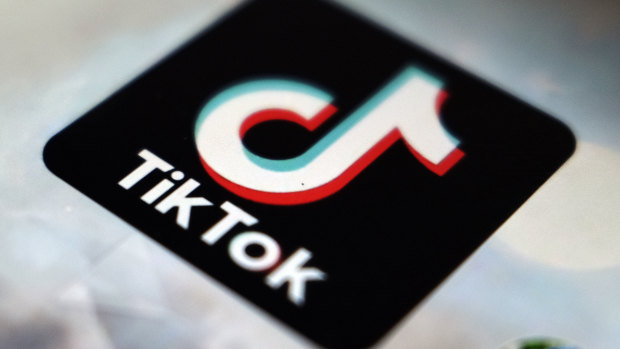Opinion
TikTok isn’t the bogeyman of journalism, but it could help save it
Abbir Dib
Social media producerWhen news surfaced more than 80 per cent of the ABC’s 7pm bulletin’s viewers are over 55 years old, no one was surprised.
The ABC viewer figures were leaked after it announced veteran political journalist Andrew Probyn had been made redundant and that, as part of the corporation’s latest five-year plan, it will be increasing its focus on online and social media content.

Social media platforms like TikTok have become a popular news option for younger audiences. Credit: AP
“Sacking Andrew Probyn and replacing him with junior reporters who can get stuff on TikTok will drive down audience even further,” former NSW premier Bob Carr tweeted.
While the figures reflect the fact Australians over 55 grew up with television news and continue to engage in those habits, many Australians prefer other platforms. According to the Digital News Report, 54 per cent of Gen Z say social media is their main source of news. Older people are also moving online, too – the proportion of Australians aged over 75 who mainly use social media for news has more than tripled from 2019 to 2021.
Whenever efforts are made to reallocate funding and take the news to the growing audiences on platforms like TikTok, a scapegoat quickly emerges: young journalists.
Every decade or so, we’re told journalism is facing a reckoning. The first bogeyman who came for print was radio. Then it was television, the internet, YouTube and podcasts. Now, it’s TikTok. It’s worth noting that none of these bogeymen killed journalism. TV is still Australians’ main source of news, according to the report, and 61 per cent of those surveyed preferred to get their online news in text form. There’s space for everyone. To cater to the demands of a younger audience you don’t need to abandon traditional forms of journalism entirely. They can all coexist.
When I began my career in broadcast and print journalism, I decided to expand my traditional news skills to keep up with industry demands. The response from many when I took on a job as a social media producer for this masthead went something like this: How could I give up a career in esteemed areas of journalism for social media? When would I go back to “real journalism”?
It’s a tired argument that journalism distributed on social media is, as Carr puts it, “stuff”. Instead, it has allowed more people than ever to access verified news from trusted sources through a medium of their choice. Journalism is evolving, and young journalists should not be blamed for helping it reach new audiences. Particularly when you consider Australia has the highest TikTok monthly usage time in the world according to the Digital 2023 Australia report.
Social media content looks different from traditional news. It’s normally less text-heavy than print, and less refined than television packages. News on TikTok is quicker, more casual in presentation, doesn’t always involve going out “on the field”, and is conversational in tone. The nature of the content is a reflection of the casualness of the platform and the availability of resources. In an ideal situation, social media content would look more highbrow and less like “stuff”, but this kind of journalism is still in its infancy.
A news TikTok could be a clip of Jonny Bairstow sledging Steve Smith at the Ashes. Other times, it’s heavier political news. A video on the rise in Australia’s minimum wage reached over 370,000 people on TikTok – a great opportunity to highlight the work of experienced journalists and inspire conversation in the comment section. This video was mostly viewed by Australians aged 18 to 34, a demographic that is less engaged with traditional news media.
The report finds those who eschew television and radio news are more likely to consume news when it’s presented on social media. I’m drawn to this challenge of making content accessible for those who might not seek it out. Attracting an audience to a video about bubble-tea brand Chatime’s potential store closures can be a way to engage people in investigations about workers’ rights.
I deeply admire the work of my colleagues who run years-long investigations uncovering corruption, spend hours in court, and work to build the trust of sources. These are all the reasons I pursued journalism in the first place. Who’s to say the social media producers of today couldn’t be the foreign correspondents of tomorrow?
I don’t think I’m doing God’s work by making news TikToks. But blaming junior reporters who are merely exploring new ways of presenting the news ignores the reality of an industry forever in flux.
Abbir Dib is a social media producer and journalist for The Age.
The Opinion newsletter is a weekly wrap of views that will challenge, champion and inform your own. Sign up here.